The Babadook
8.6 /10 1 Votes
98% Rotten Tomatoes 86% Metacritic Genre Drama, Horror, Thriller Duration Country AustraliaCanada | 6.9/10 IMDb 3.5/4 Roger Ebert Language English Language English | |||||||||||||||||||||||||||||||||
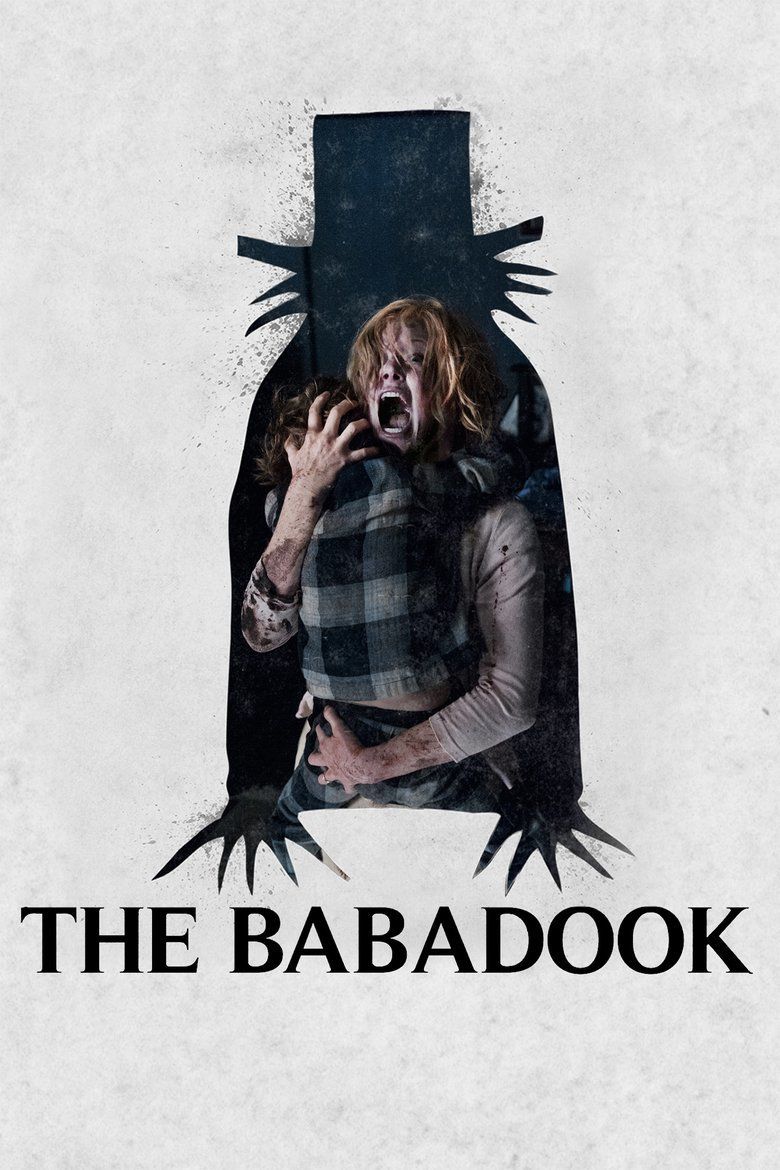 | ||||||||||||||||||||||||||||||||||
Release date 17 January 2014 (2014-01-17) (Sundance)22 May 2014 (2014-05-22) (Australia) Cast (Amelia), Noah Wiseman (Samuel), (Robbie), Tim Purcell (The Babadook), (Claire), Cathy Adamek (Prue)Similar movies Jurassic World , Godzilla , Godzilla: Final Wars , The Return of Godzilla , Rodan , Mothra Tagline If it's in a word, or it's in a look, you can't get rid of the Babadook. | ||||||||||||||||||||||||||||||||||
The babadook official trailer 1 2014 essie davis horror movie hd
The Babadook is a 2014 Australian psychological horror film written and directed by Jennifer Kent in her directorial debut, and produced by Kristina Ceyton and Kristian Moliere. The film stars Essie Davis, Noah Wiseman, Daniel Henshall, Hayley McElhinney, Barbara West, and Ben Winspear. It is based on the 2005 short film Monster, also written and directed by Kent.
Contents
- The babadook official trailer 1 2014 essie davis horror movie hd
- The babadook official trailer 2 2014 essie davis horror movie hd
- Plot
- Cast
- Development
- Filming
- Release
- Home media
- Box office
- Critical response
- Popularity in the LGBT community
- Symbolism
- Accolades
- References
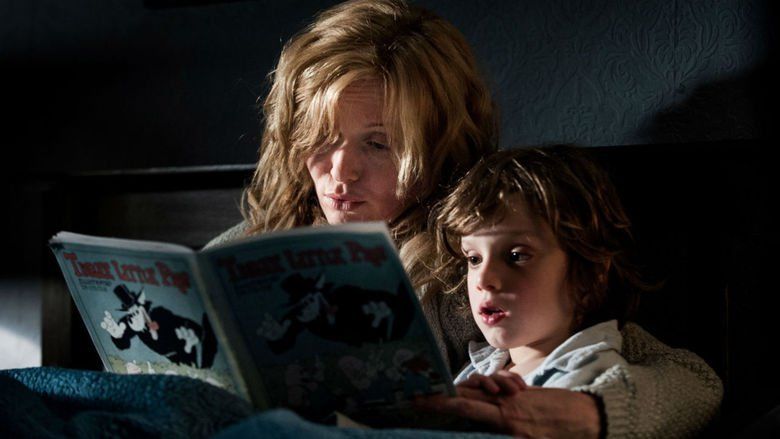
The Babadook was initially not a strong commercial success in Australia and was given a limited release in art house theatres. However, largely after its strong reception at the 2014 Sundance Film Festival, the film generated more attention in the United States and Europe which ultimately helped its reputation in Australia. It was a major success internationally, gaining $7.5 million over a $2 million budget, and received critical acclaim.
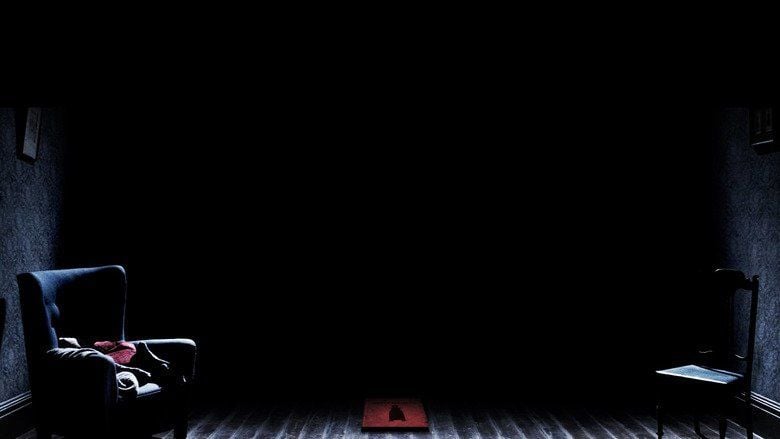
The babadook official trailer 2 2014 essie davis horror movie hd
Plot

Amelia Vanek is a troubled and exhausted widow who has brought up her six-year-old son Samuel alone. Her late husband Oskar, was killed in a car accident that occurred as he drove Amelia to the hospital during her labour. Sam begins displaying erratic behaviour: he becomes an insomniac and is preoccupied with an imaginary monster, against which he has built weapons to fight. Amelia is forced to pick up her son from school after Sam brings one of the weapons there. One night, Sam asks his mother to read a pop-up storybook: Mister Babadook. It describes the titular monster, the Babadook, a tall pale-faced humanoid in a top hat with pointed fingers who torments its victims after they become aware of its existence. Amelia is disturbed by the book and its mysterious appearance, while Sam becomes convinced that the Babadook is real. Sam's persistence about the Babadook leads Amelia to often have sleepless nights as she tries to comfort him.
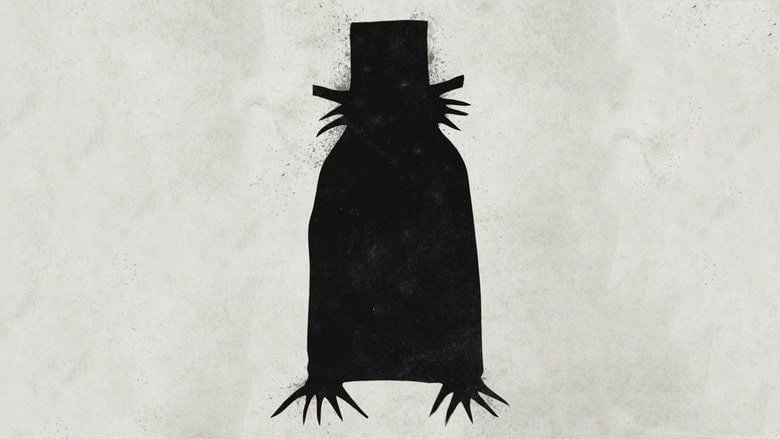
Soon after, strange events occur: doors open and close mysteriously by themselves, strange sounds are heard and Amelia finds glass shards in her food. She attributes the events to Sam's behaviour, but he blames the Babadook. Amelia rips up the book and disposes of it. At her birthday party, Sam's cousin Ruby bullies Sam for not having a father, in response to which he pushes her out of her tree house and breaks her nose in two places. Amelia's sister Claire admits she cannot bear Sam to which Amelia takes great offence. On the drive home, Sam has another vision of the Babadook and suffers a febrile seizure, after which Amelia makes a successful plea for sedatives to a pediatrician.
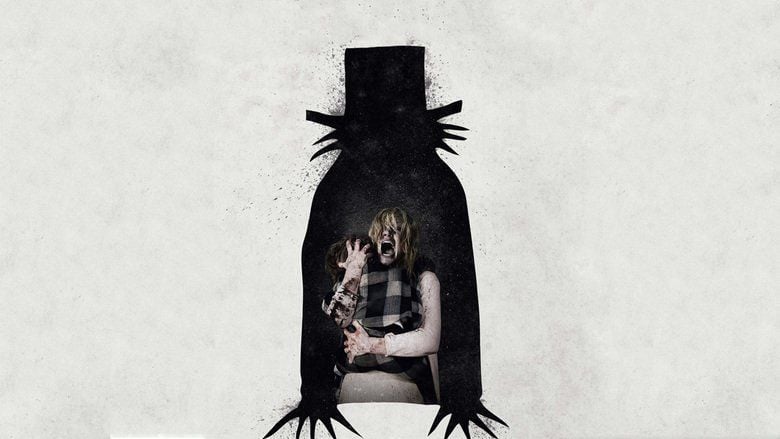
The following morning, Amelia finds the Mister Babadook book reassembled on the front door step. New words taunt her by saying that the Babadook will become stronger if she continues to deny its existence, containing pop-ups of her killing her dog Bugsy, Samuel and then herself. Terrified, Amelia burns the book and runs to the police after a disturbing phone call. However, Amelia has no proof of the stalking, and when she then sees the Babadook's suit hung up behind the front desk, she leaves. Amelia starts to become more isolated and shut-in, being more impatient, shouting at Samuel for 'disobeying' her constantly, and having frequent visions of the Babadook once again.
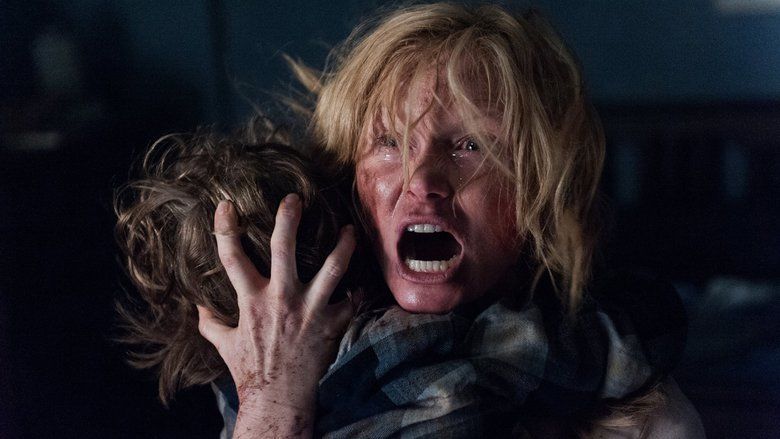
One night, Amelia sees a vision of Oskar, who agrees to return if she gives him Sam. Fleeing, Amelia is stalked by the Babadook through the house until it takes over her and finally possesses her, breaking Bugsy's neck, and attempting to kill Sam. Eventually luring her into the basement, Sam knocks her out. Amelia awakens, tied up in the basement, with a terrified Sam nearby. When she tries to strangle him, he lovingly caresses her face, causing her to throw up an inky black substance, an action which seemingly expels the Babadook. When Sam reminds Amelia that "you can't get rid of the Babadook", an unseen force drags him into Amelia's bedroom. After saving Sam, Amelia is forced by the Babadook to rewatch a vision of her husband's death, to her utter despair. She then furiously confronts the Babadook, and is then able to make the beast retreat into the basement, where she locks the door behind it.
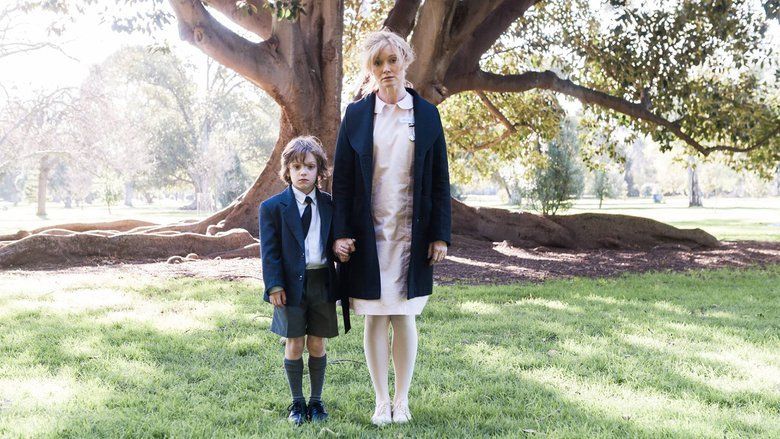
After the ordeal, Amelia and Samuel have managed to recover. Amelia is attentive and caring toward him, encouraging him with the weapons he makes and being impressed at Sam's magic tricks. They gather earthworms in a bowl and Amelia takes them to the basement, where the Babadook resides. She places the bowl on the floor for the Babadook to eat. However, as the beast tries to attack her, Amelia calms it down, and it retreats to the corner taking the earthworms along with it. Amelia returns to the yard to celebrate Sam's birthday.
Cast
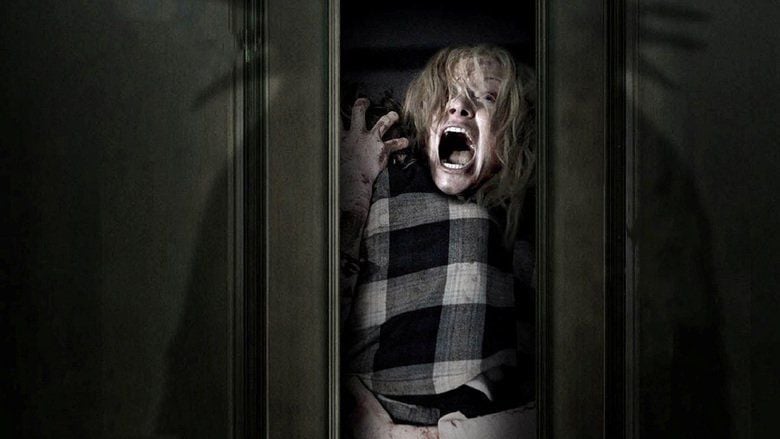
Development
Kent studied at the National Institute of Dramatic Art (NIDA)—where she learned acting alongside Davis—and graduated in 1991. She then worked primarily as an actor in the film industry for over two decades. Kent eventually lost her passion for acting by the end of the 1990s and sent a written proposal to Danish filmmaker Lars von Trier, asking if she could assist on the film set of von Trier's 2003 drama film, Dogville, to learn from the director. Kent's proposal was accepted and she considers the experience her film school, citing the importance of stubbornness as the key lesson she learned.
Prior to Babadook, Kent's first feature film, she had completed a short film, titled Monster, and an episode of the television series Two Twisted. Kent explained in May 2014 that the origins of Babadook can be found in Monster, which she calls "baby Babadook".
The writing of the screenplay began in around 2009 and Kent has stated that she sought to tell a story about facing up to the darkness within ourselves, the "fear of going mad" and an exploration of parenting from a "real perspective". In regard to parenting, Kent further explained in October 2014: "Now, I'm not saying we all want to go and kill our kids, but a lot of women struggle. And it is a very taboo subject, to say that motherhood is anything but a perfect experience for women." In terms of the characters, Kent said that it was important that both characters are loving and lovable, so that "we [audience] really feel for them"—Kent wanted to portray human relationships in a positive light. In total, Kent completed five drafts of the script.
Kent drew from her experience on the set of Dogville for the assembling of her production team, as she observed that von Trier was surrounded by a well-known "family of people". Therefore, Kent sought her own "family of collaborators to work with for the long term." Unable to find all of the suitable people within the Australian film industry, Kent hired Polish director of photography (DOP) Radek Ladczuk, for whom Babadook was his first-ever English language film, and American illustrator Alexander Juhasz. In terms of film influences, Kent cited 1960s, '70s and '80s horror—including The Thing (1982), Halloween (1978), Les Yeux Sans Visage (1960), The Texas Chainsaw Massacre (1974), Carnival of Souls (1962) and The Shining (1980)—as well as Vampyr (1932), Nosferatu (1922) and Let The Right One In (2008).
Although the process was challenging and she was forced to reduce their total budget, producer Kristina Ceyton managed to secure funding of around A$2.5 million from government bodies Screen Australia and the SAFC; however, they still required an additional budget for the construction of the film sets. To attain the funds for the sets, Kent and Causeway Films producer Kristina Ceyton launched a Kickstarter crowdfunding campaign in June 2012, with a target of US$30,000. Their funding goal was reached on 27 September 2012 through pledges from 259 backers raising $30,071.
Filming
The film was primarily shot in Adelaide, South Australia, with most of the interior shots filmed on a soundstage in the Australian city—as the funding was from the South Australian state government, this was a requirement that Kent needed to meet. However, Kent explained to the Den of Geek website that she is not patriotic and didn't want the film to be "particularly Australian".
To contribute to the universality of the film's appearance, a Victorian terrace-style house was specifically built for the film, as there are very few houses designed in such a style in Adelaide. A script reading was not done due to Noah Wiseman's age at the time—six years old—and Kent focused on bonding, playing games, and lots of time spent with the actors in which they became more familiar with one another. Pre-production occurred in Adelaide and lasted three weeks and, during this time, Kent conveyed a "kiddie" version of the narrative to Wiseman.
Kent originally wanted to film solely in black-and-white, as she wanted to create a "heightened feel" that is still believable. She was also influenced by pre-1950s B-grade horror films, as it was "very theatrical", in addition to being "visually beautiful and terrifying". Kent later lost interest in the black-and-white idea and worked closely with production designer Alex Holmes and Radek to create a "very cool", "very claustrophobic" interior environment with "meticulously designed" sets. The film's final colour scheme was achieved without the use of gels on the camera lenses or any alterations during the post-filming stage. Kent cited filmmakers David Lynch and Roman Polanski as key influences during the filming stage.
Kent described the filming process as "stressful" because of Wiseman's age. Kent explained "So I really had to be focused. We needed double the time we had." Wiseman's mother was on set and a "very protective, loving environment" was created. Kent explained after the release of the film that Wiseman was protected throughout the entire project: "During the reverse shots where Amelia was abusing Sam verbally, we had Essie [Davis] yell at an adult stand-in on his knees. I didn't want to destroy a childhood to make this film—that wouldn't be fair." Kent's friendship with Davis was a boon during filming and Kent praised her former classmate in the media: "To her credit, she's [Davis] very receptive, likes to be directed and is a joy to work with."
In terms of the Babadook monster and the scary effects of the film, Kent was adamant from the outset of production that a low-fi and handmade approach would be used. She cites the influence of Georges Méliès, Jean Epstein's The Fall of the House of Usher and Häxan. Kent used stop-motion effects for the monster and a large amount of smoothening was completed in post-production. Kent explained to the Empire publication: "There's been some criticism of the lo-fi approach of the effects, and that makes me laugh because it was always intentional. I wanted the film to be all in camera." She has also said that The Man in the Beaver Hat from the 1927 lost film London After Midnight was an inspiration for the design of the Babadook.
Release
The film's global premiere was in January 2014 at the Sundance Film Festival. The film then received a limited theatrical release in Australia in May 2014, following a screening in April 2014 at the Stanley Film Festival.
In Singapore, the film was released on 25 September 2014. The film opened in the United Kingdom for general release on 17 October 2014, and in the United States on 28 November 2014.
Home media
The film, alongside the short film Monster, was first released on DVD and Blu-ray in Australia by Umbrella Entertainment on 31 October 2014. The U.S. Blu-ray and DVD was released on 14 April 2015, and the special edition was also available on that date. The special edition features Kent's short film, Monster, and the comic novel, Creating the Book, by Juhasz. The UK Blu-ray Disc features the short documentary films Illustrating Evil: Creating the Book, There's No Place Like Home: Creating the House and Special Effects: The Stabbing Scene.
Box office
The Babadook opened in Australia on 22 May 2014 in just 13 cinemas on a limited release, eventually grossing a total of only $258,000. The film fared much better internationally than it did in its native country. In North America, The Babadook opened on a limited release basis in three theaters and grossed US$30,007, with an average of $10,002 per theater. The film ranked in the 42nd position at the box office, and, as of 1 February 2015, has grossed $950,792 in the U.S. and $6.5 million elsewhere in the world. To date, the film's worldwide box office takings are $7.5 million which compares favourably with the estimated production budget of $2 million. It was subsequently released in France, where it opened at number 11 at the French box office. Its success overseas re-generated interest in Australia, and the film was expanded to mainstream movie-theatres like Event, rather than primarily art house cinemas.
Critical response
The Babadook received critical acclaim, chiefly for its acting (particularly that of Davis and Wiseman), Kent's screenplay and direction, atmosphere, intensity, and story. It holds a "Certified Fresh" score of 98% on Rotten Tomatoes based on 210 reviews with an average rating of 8.2 out of 10. The critical consensus states: "The Babadook relies on real horror rather than cheap jump scares—and boasts a heartfelt, genuinely moving story to boot." The film also has a score of 86 out of 100 on Metacritic based on 34 critics, indicating "universal acclaim". On Rotten Tomatoes' aggregation, it was ranked as the third most-praised film of the year.
Dan Schindel from Movie Mezzanine said that "The Babadook is the best genre creature creation since the big black wolf-dog aliens from Attack the Block." After seeing the film at the 2014 Stanley Film Festival, Flay Otters wrote on the HorrorMovies.ca fan site: "This is a film that mixes strong-minded storytelling with a clear dedication to craft ... It is mature and patient and it is, without a doubt, one of the best horror films this year."
On 30 November 2014, William Friedkin, director of The Exorcist (1973) stated on his Twitter profile, "Psycho, Alien, Diabolique, and now THE BABADOOK." Friedkin also added, "I've never seen a more terrifying film. It will scare the hell out of you as it did me." Prominent British film critic Mark Kermode named The Babadook his favourite film of 2014.
Popularity in the LGBT community
Starting in late 2016, after Netflix users reported seeing the film mistakenly categorized as an LGBT movie on Netflix, the character of the Babadook was portrayed in Internet memes as an unlikely gay icon on Tumblr and other social media sites. Despite the absence of overt references to LGBT culture in the film, fans and journalists generated interpretations of queer subtext in the film that were often tongue-in-cheek, but occasionally more serious, highlighting the character's dramatic persona, grotesque costume, and chaotic effect within a traditional family structure. In June 2017, The Babadook trended on Twitter and was displayed as a symbol during that year's Pride Month. The social media response became so strong that theatres in Los Angeles took the opportunity to hold screenings of the film for charity.
Symbolism
Writing for The Daily Beast, Tim Teeman contends that grief is the "real monster" in The Babadook, and that the film is "about the aftermath of death; how its remnants destroy long after the dead body has been buried or burned". Teeman writes that he was "gripped" by the "metaphorical imperative" of Kent's film, with the Babadook monster representing "the shape of grief: all-enveloping, shape-shifting, black". Teeman states that the film's ending "underscored the thrum of grief and loss at the movie's heart", and concludes that it informs the audience that grief has its place and the best that humans can do is "marshal it".
Egyptian national film critic Wael Khairy wrote in his "Film Analysis" on 22 November 2014 that The Babadook "taps into something real, a real human fear". Khairy argues that what the Babadook stands for is "up for debate", but writes:
The malevolent Babadook is basically a physicalised form of the mother's trauma ... I believe, the Babadook embodies the destructive power of grief. Throughout the film, we see the mother insist nobody bring up her husband's name. She basically lives in denial. Amelia has repressed grief for years, refusing to surrender to it.
Khairy concluded that the film is "based on something very real" and "feels unusually beautiful and even therapeutic."
Accolades
1 Shared award with The Water Diviner
References
The Babadook WikipediaThe Babadook IMDbThe Babadook Rotten TomatoesThe Babadook Roger EbertThe Babadook MetacriticThe Babadook themoviedb.org
